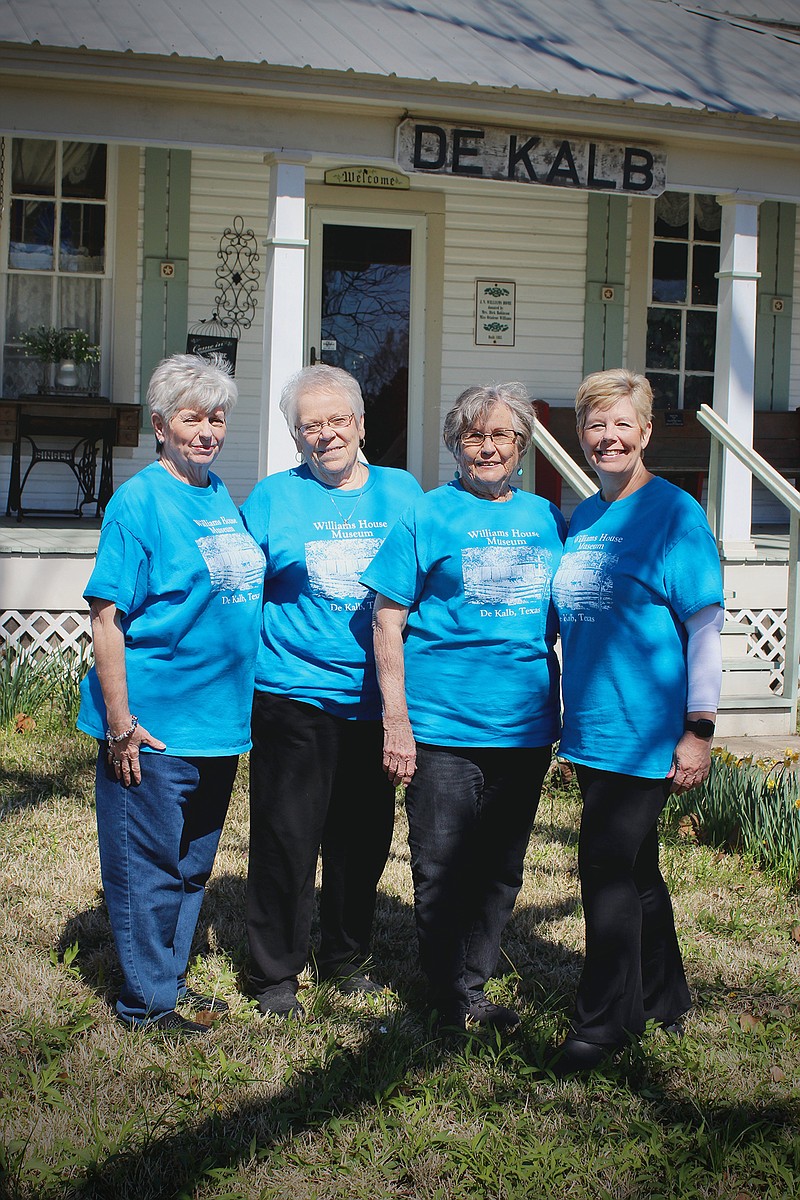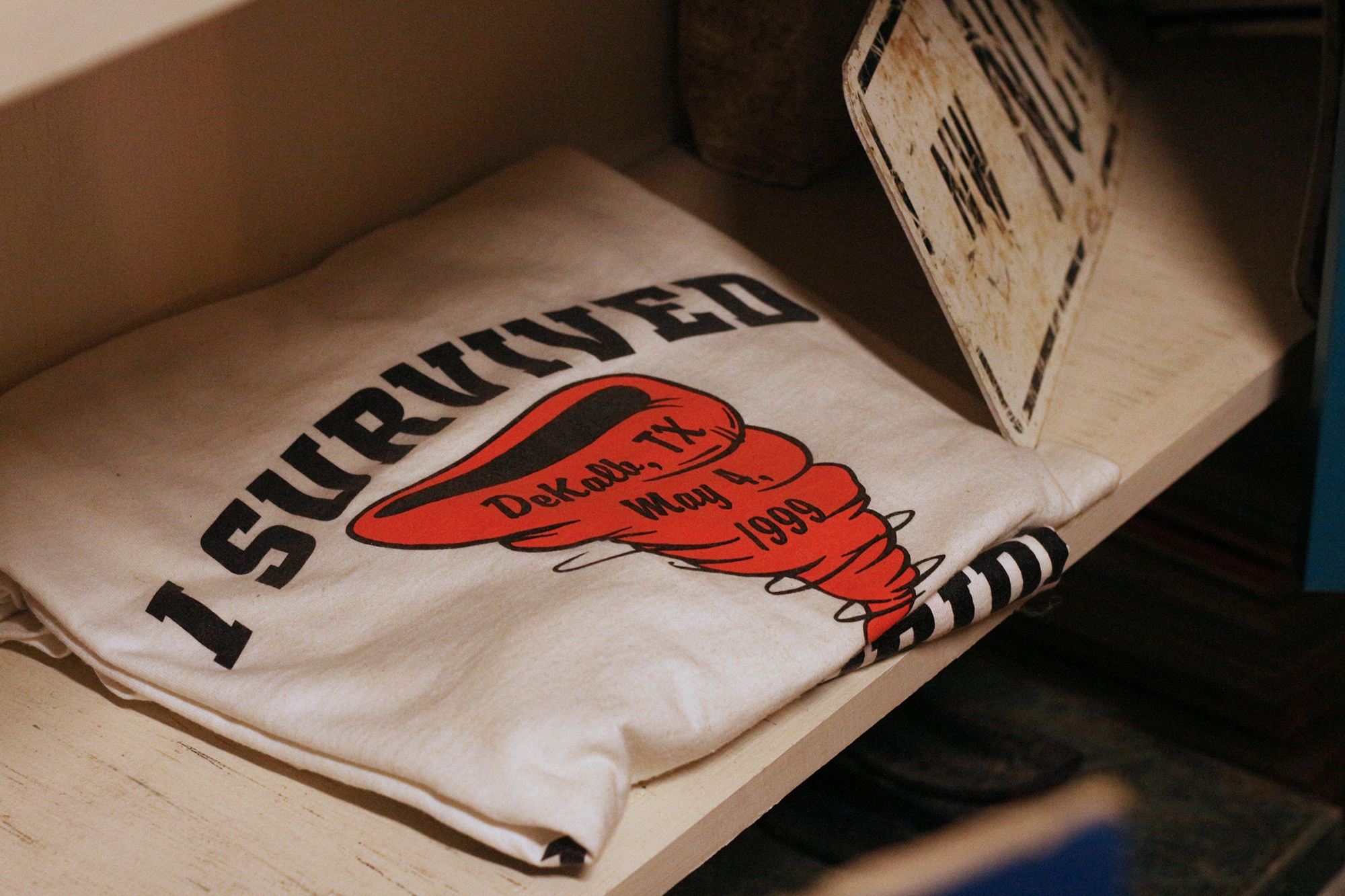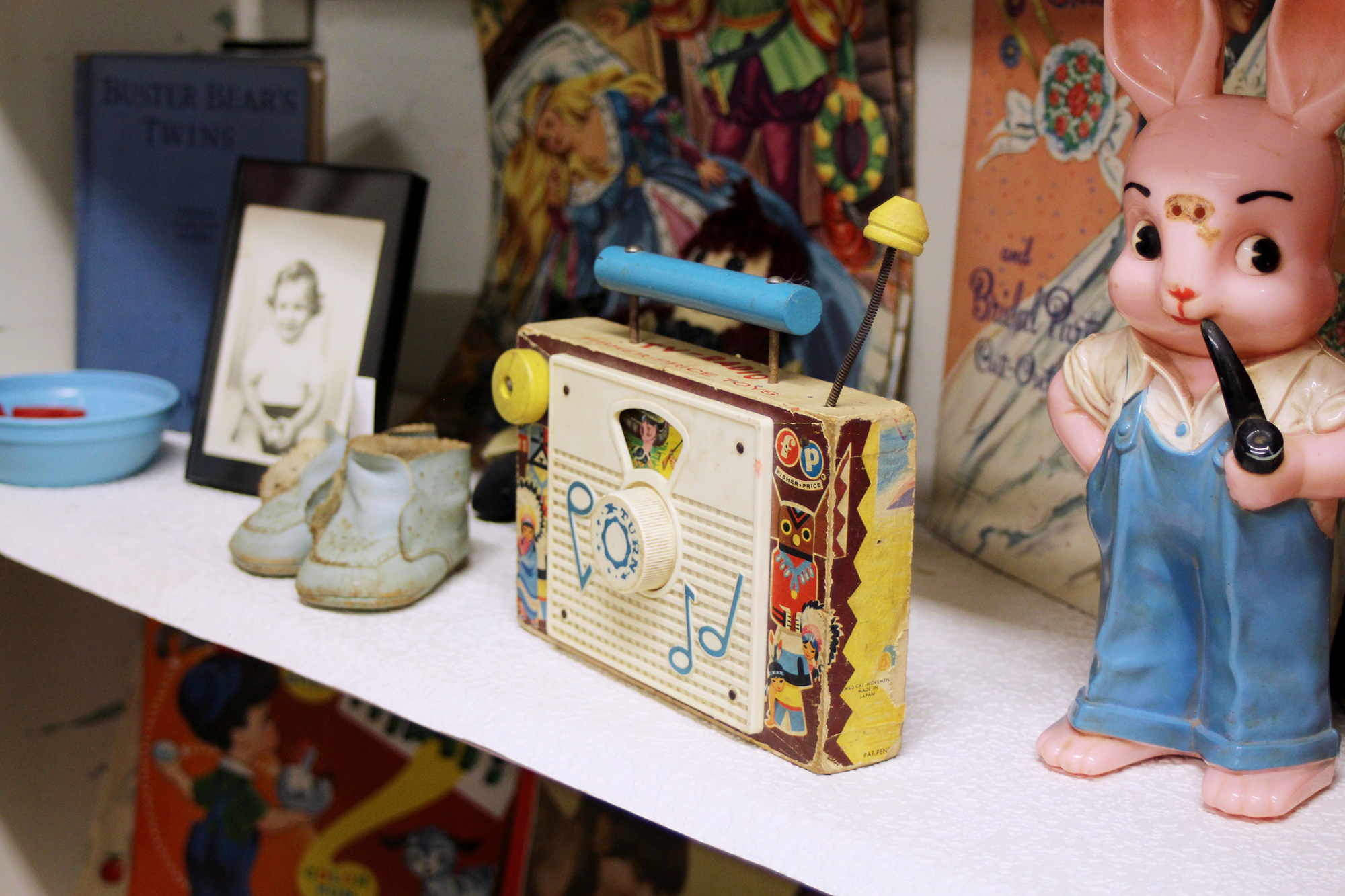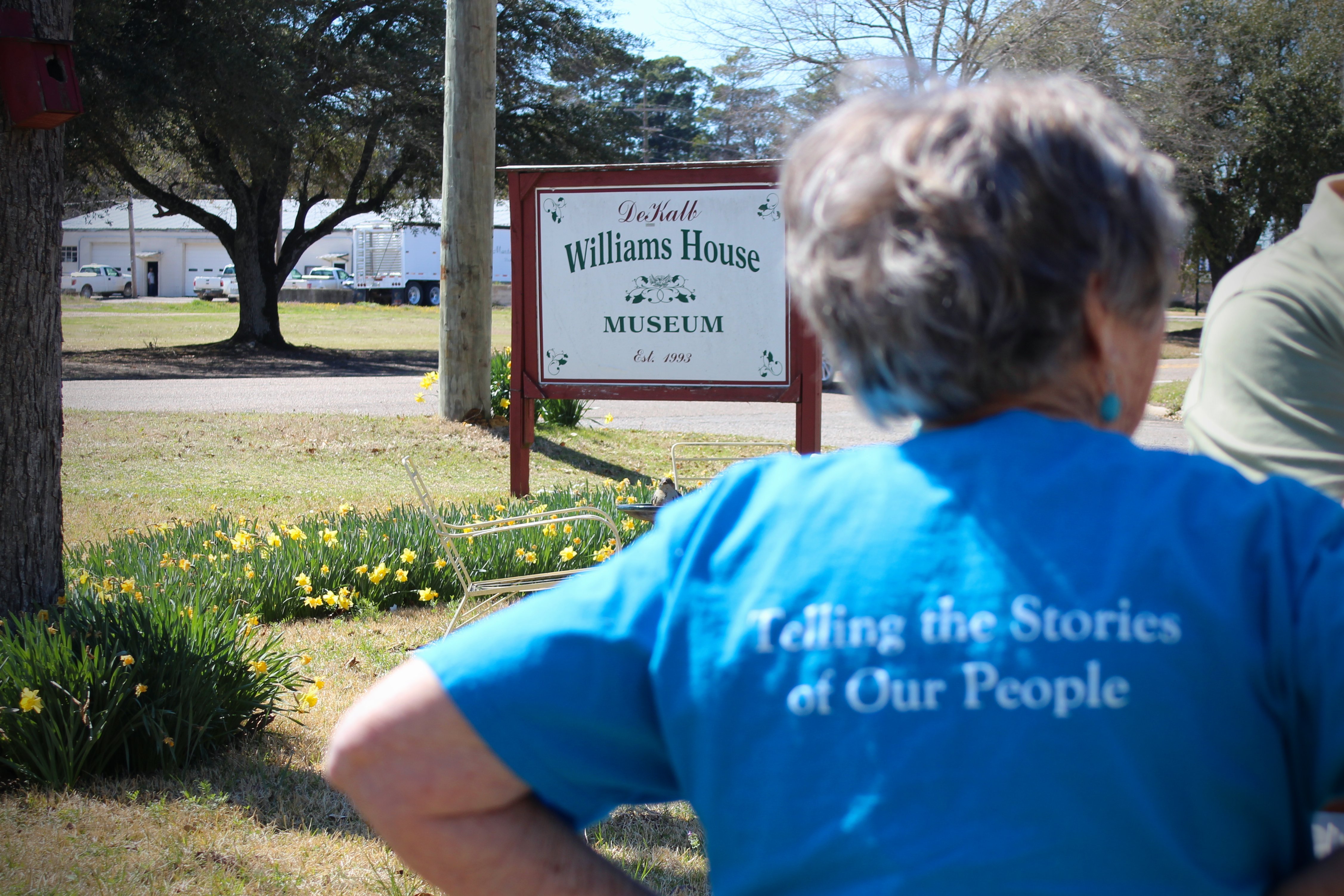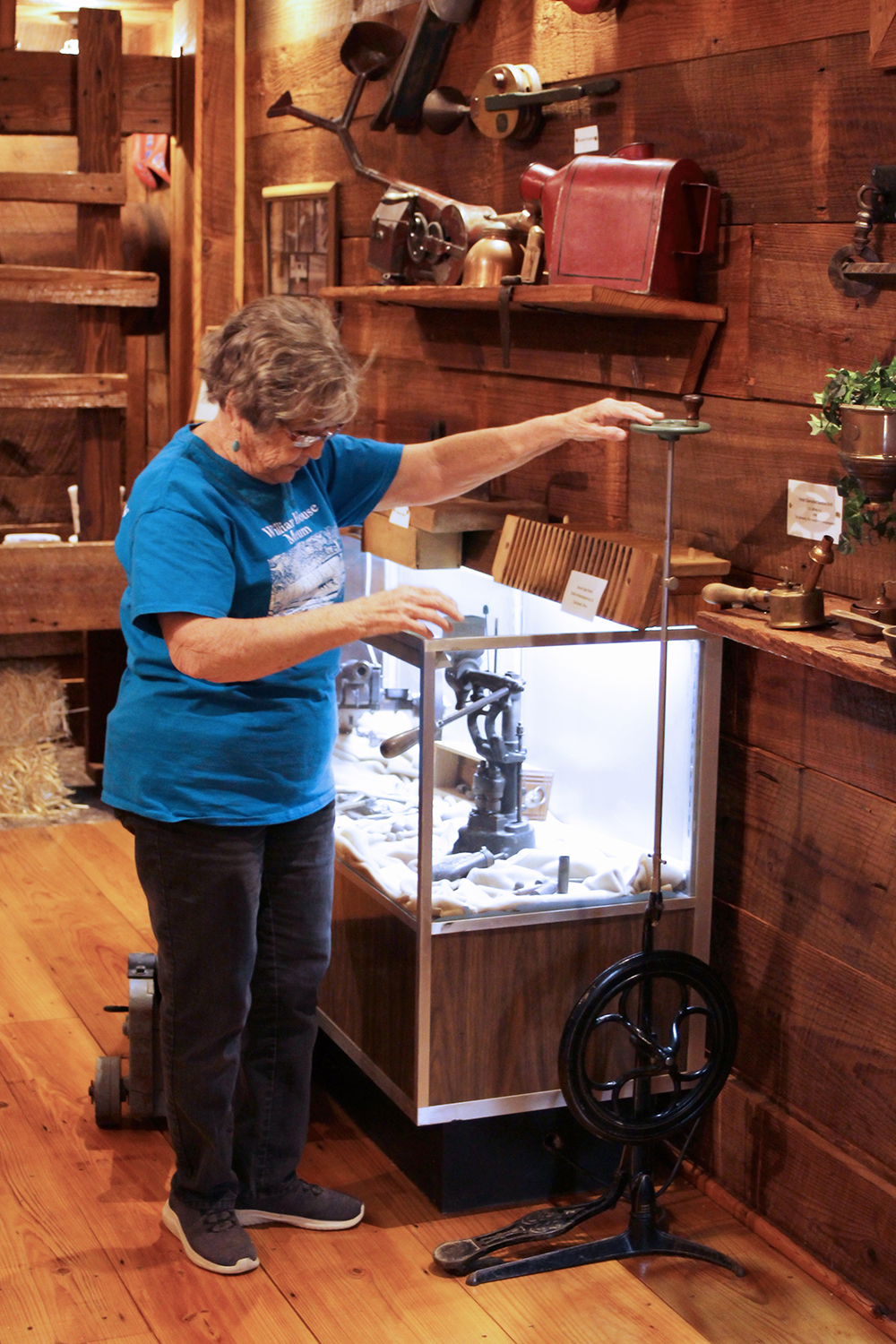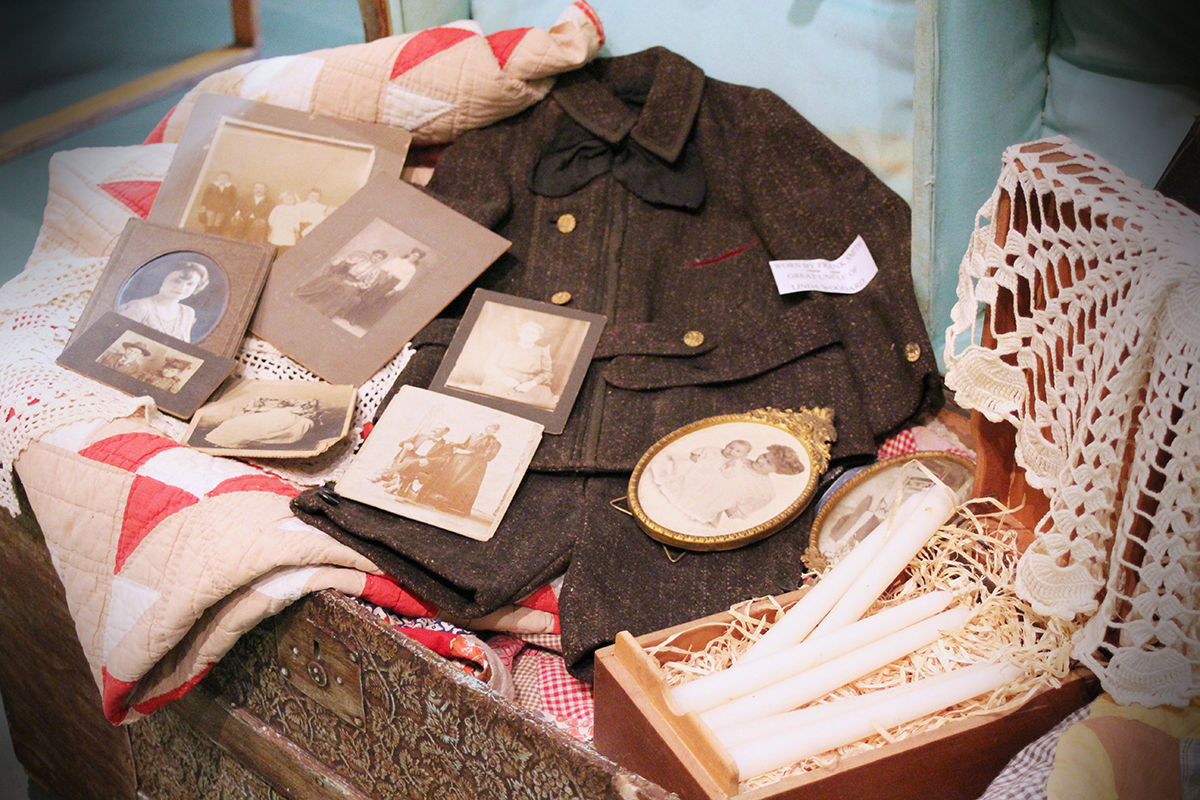Carolyn McCrary, Linda Shumake, Denise Swint and Deb Wilson, among others, are volunteers at the Williams House Museum in DeKalb, Texas.
The home was originally built in 1885 across the highway from where it currently resides. "The Williams family had it moved using big logs. They rolled it across the street on big logs," Linda said. Carolyn and Linda have been there since the doors opened in 1993. "We had a treadle sewing machine," Linda said. "That was it!" Linda and Carolyn said in unison. The home once owned by James 'Jim' Williams and his family is now known as the 'Williams House Museum.'
Linda served on the board of the DeKalb Chamber of Commerce alongside A.J. Cooper, who believed the home could serve a greater purposed than to be vacant. He contacted the last remaining relative of the Williams family to convince her to donate it to the Chamber of Commerce to be used as administrative offices and a location for other events for the town of DeKalb. The house was placed on the market for sale, so Cooper continued to plead his case.
"One night we were at a Chamber Board meeting, and he just wasn't ready to give up on the house. So, he stepped out of the meeting and called the Williams sister one more time. When he came back in, he said 'We got it!" said Linda.
The Chamber housed their office at the home and during the town's annual Oktoberfest, they would use the house for the quilt show. Carolyn was working at the quilt show with Joni Haldeman, another museum volunteer. Carolyn and Joni had spent time visiting and agreed that the house would make a great museum for the city of DeKalb. The Chamber had recently been looking for assistance when their administrative staff took ill.
"That was part of the deal. We would do the museum and we would answer the phones for them and such," Carolyn said. "This was still their house." So, in January 1993, they started with just a sewing machine, but by March they had enough history collected to open the doors. "Linda, Joni, D.J. Woods and I would be up here at night working and people just bring armloads of stuff. They just wanted to contribute," Carolyn said.
Everything in the museum once belonged to someone from DeKalb or has a connection to the town. The volunteers filled the museum with their own collections, as well.
"It was amazing! I am telling you. People would just bring in loads of stuff. They didn't want to get rid of the things, but they (didn't) want it all in their house anymore either," Carolyn said.
Linda and Carolyn were retired at the time of the museum's opening, and Joni was working part-time. The museum was bursting at the seams and needed more space.
"We decided to build a downstairs area. We sat down and drew up the plans and even drew where each piece of the collection would go in the room," Carolyn said. "Of course, the Chamber of Commerce still owned the house," Linda said.
So, the ladies were unsure of how to add on. They went to the bank with plans in hand. The women asked Mr. Gilliam at the bank, "Do you think three nice little old women could go to the bank and get a loan on a house we don't own?"
He took in all their ideas, questions and concerns then asked, "What is your bottom line?" The ladies told him that they need a $20,000 loan to add a room to the house. He thought for a moment and then Linda asked him, "When does the loan committee meet?" He looked at the women and said, "I guess they just did." They left with a check that day and got the add-on that was needed.
"It was unbelievable," Carolyn said. "It was paid off in 2 years." Linda said. The museum used donations only to get the loan paid off. "And we borrowed from them again later."
The museum had been successful thus far, but the donations were steadily coming in from collectors all over. After the expansion of the main house, the volunteers decided they need a place to store some items. So, they bought a small building to put behind the main house.
"Dr. Kyle Groom had a building that he used for his x-ray machine. He decided to sell to us so we could use it for storage," Carolyn said. "We painted it and made it so cute that we decided that it was too cute for a storage building."
They filled the room with school memorabilia from DeKalb High school and surrounding schools. The building is now known as "The School House."
The expansion of the museum did not stop there. The next project was centered around the tail end section of a plane from a crash in 1985. Ricky Nelson was a musician whose plane had to make an emergency landing near DeKalb, but ultimately lost his life in the incident. The two pilots survived the crashed. The museum first put the plane in a garage behind closed doors.
"We didn't want to make light of Ricky's death, so we just closed it up in the garage. One of the band members had three sisters that traveled down here to see the tail end of the plane," Carolyn continued. "We took them to the garage, and they just wanted to touch the plane. I think that is when we knew we had to let people see it and learn about the story of Ricky Nelson." The volunteers put the plane in the yard with a fence around it for everyone to see.
This prompted a Ricky Nelson fan to call the museum to inquire about the section of plane.
"Jerry Johnson, a good friend of ours now, came down here from Ohio and kind of went berserk over the plane being out in the open. He wanted to help so he gave us a super nice donation to build a roof over it. "So, we built the pavilion."
The front of the pavilion was covering the plane and the back portion was used for storage. Of course, the museum was continuing to receive donations from the community which led to another expansion. A.J. Cooper came to the museum again, this time with farm equipment on his mind and nowhere for it to go. He convinced the volunteers that instead of building a cover for the farm equipment, a barn would be more suitable.
"We had already borrowed more money for the pavilion, so A.J. knew that we couldn't go back to the bank to get money for the barn," Linda said. "Well, A.J. is retired and he goes to the coffee shop every morning to meet with a group of guys there," Carolyn said. "He said 'Ya know, the museum needs a new barn and I think that you can give $1,000.' He started pointing at different people saying they could give $1,000 and $2,000. And they did it!" The town pulled together and got a barn built for the museum. A.J already had farm equipment, but the town brought more to fill it.
The museum has always relied on donations as a means of expansion and operation, but about 12 years ago, a new idea emerged. A DeKalb resident decided to host her bridge club meeting at the Williams House Museum.
"She didn't want to clean and set up her house so she came by here and asked if she could host it at the museum," said Denise.
Initially they only met at the house every other week to play cards. However, the volunteers decided to offer the group a luncheon and dessert.
"They have been our biggest customers." The pandemic put a halt to events, meetings, and the museum schedule as a whole. "It has been 2 years since the Bridge Club had a meeting here. We are hosting them again soon. First time since the pandemic and we are excited," said Carolyn. The museum has hosted executive meetings, weddings and class reunions. All the proceeds benefit the museum as it continues to preserve the history of DeKalb. "It is telling the stories of our people," said Denise. "That is what we are all doing."
As the museum first started with volunteers, its history started with each volunteer. Linda's time in DeKalb started at less than 1 year old. Her family opened the first funeral home of DeKalb in 1946, Hanner Funeral Home. Carolyn was born in DeKalb and although she moved away, she ultimately came back to same piece of land she grew up on. Denise's family first came to DeKalb in 1886. Bev's family moved to DeKalb when she was a young child. The Williams House Museum is now owned by the "Friends of the Williams House Museum."
"If you come in here to see the museum and learn the history, that makes you a friend," Linda said. Carolyn, Deb and Denise all nodded their heads in agreement. To learn more about the Williams House Museum, visit them at 303 E. Front St, DeKalb, or find their group on Facebook by searching "Friends of the Williams House Museum."

